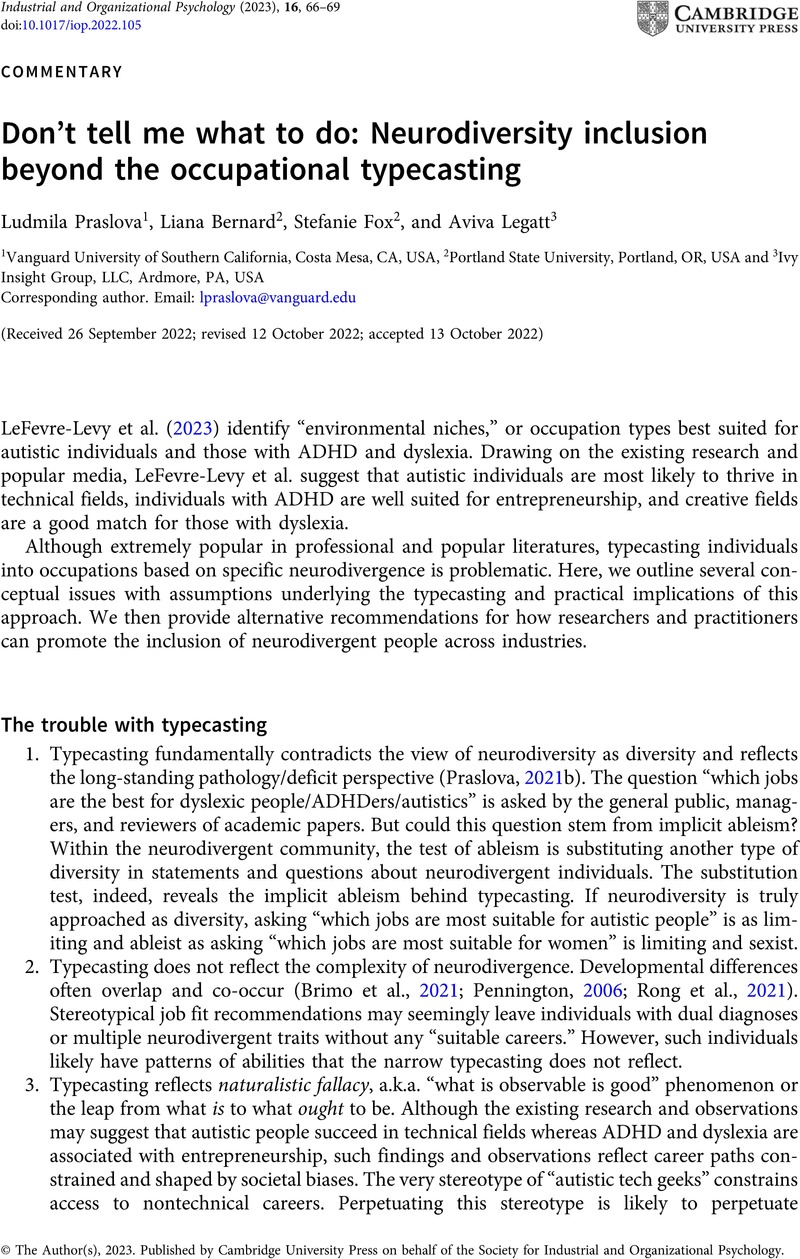Crossref Citations
This article has been cited by the following publications. This list is generated based on data provided by Crossref.
Garrison, Elizabeth
Singh, Dalvir
Hantula, Donald
Tincani, Matt
Nosek, John
Hong, Sungsoo Ray
Dragut, Eduard
and
Vucetic, Slobodan
2023.
Understanding the experience of neurodivergent workers in image and text data annotation.
Computers in Human Behavior Reports,
Vol. 11,
Issue. ,
p.
100318.
Demeyère, Caroline
2024.
Neurodiversity and Entrepreneurship.
p.
87.
Comer, Debra R.
2024.
Neurodiversity and Work.
p.
107.
Duffy, Taylor
and
Romero, Maria
2024.
Promoting Neurodiversity Through MBSE and Other Technical Approaches.
INCOSE International Symposium,
Vol. 34,
Issue. 1,
p.
287.
Hall, Laura J.
Brum, Christopher
Steinbrenner, Jessica R.
Hume, Kara
Grundon, Gretchen
and
Spitzer, Hannah
2024.
Interests, Plans, and Hopes for Life After High School From Autistic Young Adults’ Perspectives.
Remedial and Special Education,
Griep, Yannick
Cruz, Kevin S.
Haggard, Dana L.
and
Haggard, K. Stephen
2025.
The Inclusive Leadership Paradox: When Inclusion Efforts Lead to the Exclusion of Neurodivergent People.
Group & Organization Management,
McDowall, Almuth
Doyle, Nancy
and
Kiseleva, Meg
2025.
Should I Stay or Should I Go? A Relational Biopsychosocial Perspective on Neurodivergent Talent, Career Satisfaction and Turnover Intention.
Human Resource Management,



